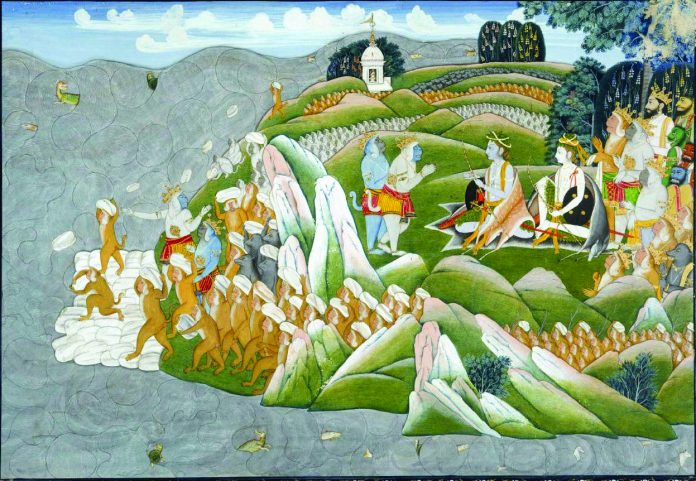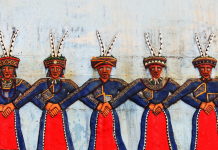Who made it? A great debate circles around the Rama Setu, or Adam’s Bridge, between politicians, geologists and Hindu devotees
Text Sonali Roy
In India, a tussle over the origins of an underwater sandbar has been going on for years, after a NASA satellite image of the Palk Strait in 2002 clearly showed the 30-kilometre chain of limestone shoals linking India’s Pamban Island and Sri Lanka’s Mannar Island. Historical records show it was a former land connection between the two countries that could be traversed on foot up till the early 15th century, until it was damaged by a cyclone.
While the structure has been referred to as “Adam’s Bridge” by Western cartographers since the early 1800s, in India it is known as Rama’s Bridge, or Rama Setu in Sanskrit. Devout Hindus believe this to be the famous bridge named Sethubandhanam, which, according to the ancient Sanskrit epic poem Ramayana, was built by the Hindu deity Rama and an army of monkeys to rescue his wife Sita from the clutches of the 10-headed demon king Ravana. Some religious devotees even treat the bridge as an object of worship on their pilgrimage to Rameshwaram city.

When new NASA images surfaced in 2006, devotees attempted to use the photos to support the supernatural origins of the bridge. The rocks and sand comprising the causeway have also been the object of much scientific scrutiny, but the opinions of geologists are divided. Researchers from the Centre for Remote Sensing at India’s Bharathidasan University used core samples to place the formation of the bridge at around 3,500 to 5,000 years ago, while critics of the study have argued that the age of the bridge varies with the testing of different samples.
Related: The Way of the Gods
Related: Lighting the Way of Faith
Scientists have also looked at the puzzling finding that the there are rocks sitting above the sand along the bridge despite their greater weight and size. Some geologists, like Chelsea Rose, a historical archaeologist affiliated with Southern Oregon University in the US, argues that this means the rocks must have been artificially placed on the sand, while others say that the phenomenon could – under certain conditions – be a result of natural wave action and sediment deposition.

A teaser for a forthcoming episode of US show What on Earth? called “Ancient Land Bridge” airing on the Discovery-owned Science Channel has recently reignited the debate, suggesting that rocks might have been brought from afar and set on top of the sandbar. It remains to be seen how conclusive the scientific evidence is, but there seems little doubt that for Hindu devotees, Rama Setu will always be the bridge that Lord Rama built.
Related: The Ancestor of All Fights
For more stories and photographs from this issue, see Asian Geographic Issue 129, 2018




![The Road to Independence: Malaya’s Battle Against Communism [1948-1960]](https://asiangeo.com/wp-content/uploads/2021/07/WhatsApp-Image-2021-07-26-at-11.07.56-AM-218x150.jpeg)






